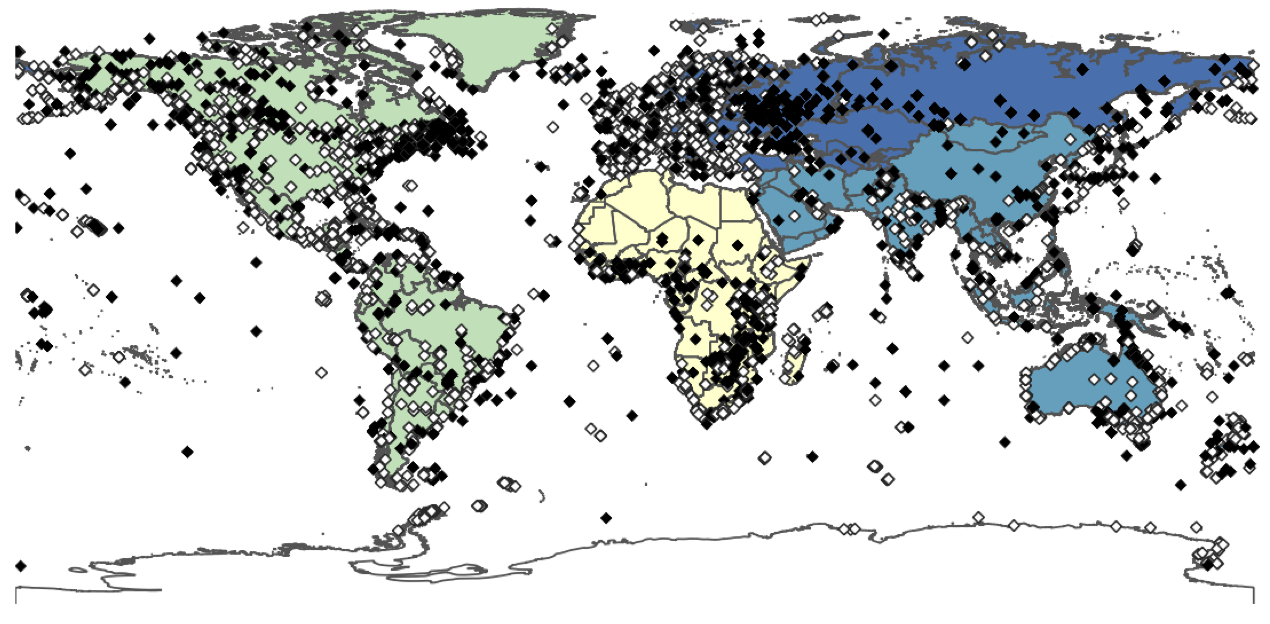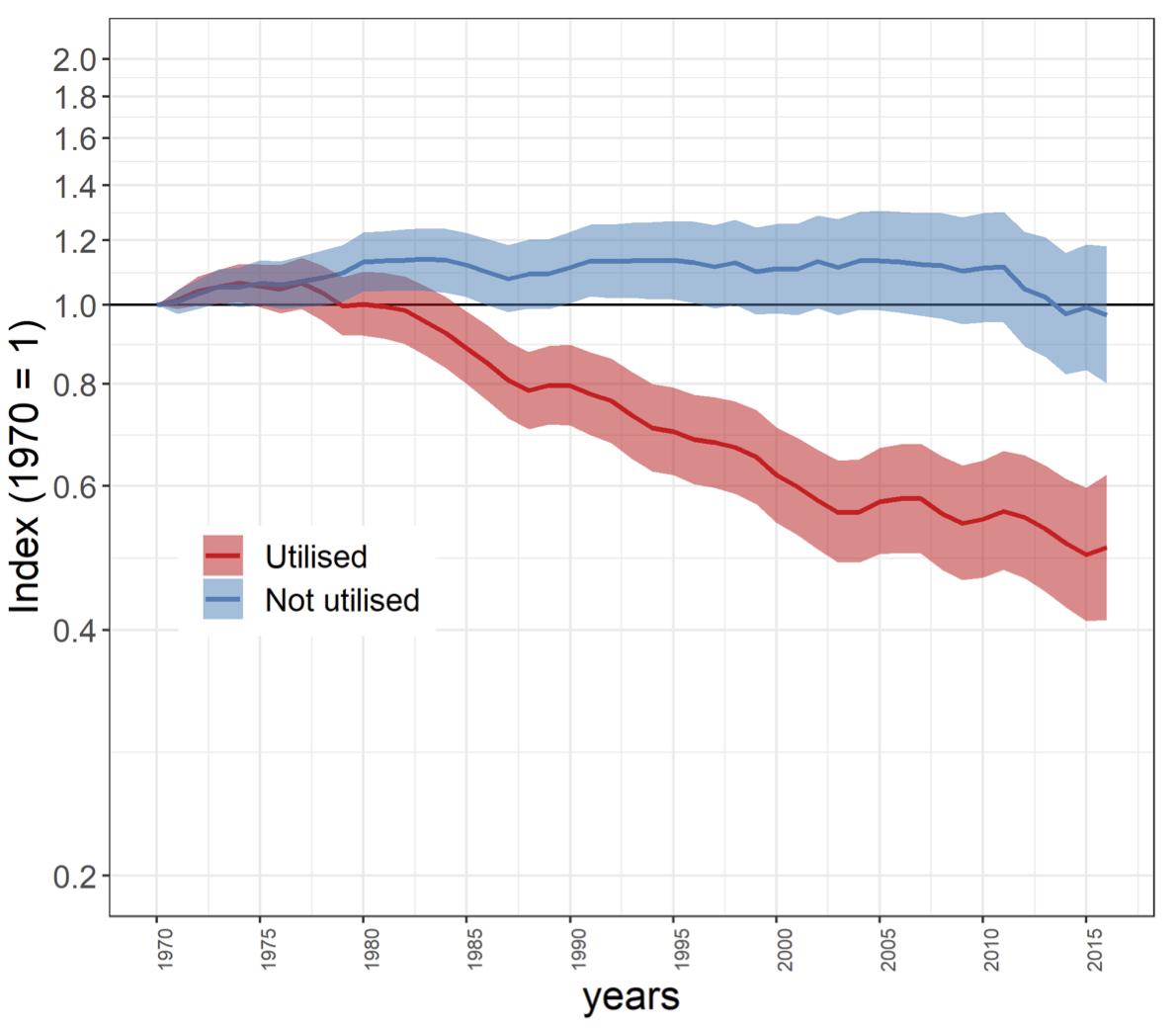Utilised Species Index
TheThe use of wildlife supports many people for their food, medicine, and livelihoods. Ensuring that this use is sustainable is central to conservation to ensure the persistence of species alongside continued utilisation by people. Using more than 11,000 wildlife population trends from the Living Planet Index (Figure 1), we conducted a global analysis of local-scale data to better understand how wildlife populations respond to utilisation.

Figure 1 Locations of populations used in the analysis overlaid onto IPBES regions. The point location is shown for the utilised (black diamonds) and non-utilised (white diamonds) populations used in the analysis.
The Indicator
We found that utilised populations declined on average by 50% between 1970 and 2016 and showed steeper negative trends than populations that were not utilised (Figure 2). Encouragingly, populations under targeted management, whether utilised or not, fared better than those that are not managed (McRae et al 2022).

Figure 2. Comparison of trends in utilised and non-utilised populations from 1970 to 2016. Index with 95% CIs of utilised and non-utilised populations for species of birds, mammals, and fish. Between 1970 and 2016, on average, utilized populations had declined by 50% (0.41–0.62), and non-utilized populations had declined by 3% (0.80–1.18).
Use in Policy
The LPI for utilised populations was used in Chapter 3 of the IPBES assessment of the sustainable use of wild species (IPBES 2022). This index has also been proposed as a complementary indicator in the post-2020 global biodiversity framework for Target 5 and Target 9.
Further information
- McRae, L., Freeman, R., Geldmann, J., Moss, G. B., Kjær-Hansen, L., & Burgess, N. D. (2022). A global indicator of utilized wildlife populations: Regional trends and the impact of management. One Earth, 5(4), 422-433.
- IPBES (2022): Summary for policymakers of the thematic assessment of the sustainable use of wild species of the Intergovernmental Science-Policy Platform on Biodiversity and Ecosystem Services. J.-M. Fromentin, M.R. Emery, J. Donaldson, M.-C. Danner, A. Hallosserie, D. Kieling, G. Balachander, E. Barron, R.P. Chaudhary, M. Gasalla, M. Halmy, C. Hicks, M.S. Park, B. Parlee, J. Rice, T. Ticktin, and D. Tittensor (eds.). IPBES secretariat, Bonn, Germany. XX pages. https://doi.org/10.5281/zenodo.6425599

